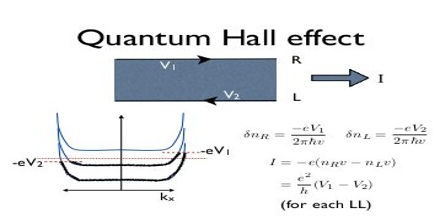The Quantum Hall Effect (QHE) stands as one of the most compelling phenomena in condensed matter physics. It reveals intricate relationships between charge, magnetism, and quantum mechanics, especially when scrutinized at extremely low temperatures. This article endeavors to uncover the fascinating aspects of the QHE, emphasizing how low temperatures facilitate the emergence of these peculiar states and the implications they hold for contemporary physics.
To fully appreciate the significance of the Quantum Hall Effect, one must first grasp the foundational principles of quantum mechanics and electromagnetism. When electrons traverse a two-dimensional plane in the presence of a perpendicular magnetic field, they undergo a remarkable transformative experience. At sufficient low temperatures, electron-groups, or quasiparticles, become entrenched in fractional quantum states, fostering a confluence of energy quantization and transport phenomena.
A pivotal factor enabling the QHE is temperature. As systems are cooled to near absolute zero, the thermal agitation of particles diminishes significantly, allowing the delicate quantum states to manifest more prominently. At such temperatures, various spontaneous magnetization effects arise. The electrons influenced by magnetic fields exhibit quantized Hall conductance, leading to plateaus in their conductivity. The QHE can be broadly categorized into two regimes: the Integer Quantum Hall Effect (IQHE) and the Fractional Quantum Hall Effect (FQHE).
The Integer Quantum Hall Effect was first observed in 1980 by Klaus von Klitzing, who noted that the Hall conductivity of conductors could take on quantized values, which are integral multiples of fundamental constants. This finding has profound implications. Notably, the conductance plateaus corresponded to precisely defined ratios of the fundamental charge of the electron and Planck’s constant. The striking regularity of these plateaus indicates that this phenomenon is deeply interconnected with quantum units of measure.
Transitioning to the Fractional Quantum Hall Effect, which was discovered shortly afterward, reveals even more fascinating dynamics. In certain conditions, quasiparticles known as “composite fermions” emerge. The FQHE showcases that electron interactions play an essential role in determining the behavior of these quasiparticles, leading to fractional conductance quantization. Here, the values of conductance are not merely integers but fractions, illuminating how collective phenomena can emerge in a two-dimensional electron gas when subjected to strong magnetic fields and low temperatures.
Equally essential to understanding the QHE is the concept of topological order. Unlike conventional phases of matter, which are delineated by symmetry breaking, topological phases remain invariant under smooth deformations. In the case of the QHE, the topological order leads to robust edge states. These edge states exist at the boundaries of the material, where electrons can traverse freely despite the presence of disorder or defects. This robustness promises exciting applications in the realm of quantum computing, where stable qubits are highly coveted.
The implications of the Quantum Hall Effect reach beyond academic musings. It has engendered numerous technological advancements. The highly quantized nature of the Hall conductance has led to its utilization in defining resistance standards, enabling exceptional precision in measurements. Moreover, the principles governing the QHE have inspired a plethora of research avenues, including studies on topological insulators and higher-dimensional analogs of the effect.
As scientists delve deeper into the realms of the Quantum Hall Effect, promising opportunities arise to investigate new materials and exotic states of matter. Emerging materials such as graphene—an allotrope of carbon with extraordinary electronic properties—exhibit characteristics that could lead to new manifestations of the QHE. The unique abilities of these materials to host multiple valence bands present opportunities for unprecedented studies into magnetic correlations and emergent phenomena.
Looking forward, the interconnectivity of the QHE with various scientific disciplines is undeniable. Whether investigating high-temperature superconductivity or exploring the intricacies of quantum entanglement, the principles elucidated by the Quantum Hall Effect continue to inspire research across the spectrum of modern physics. As experimental techniques improve and theoretical frameworks evolve, the exploration of low temperature phenomena, including QHE, presents an intriguing perspective on the underlying mechanisms governing our physical universe.
In conclusion, the Quantum Hall Effect arises from the intricate interplay of low temperatures, magnetic fields, and quantum mechanics, yielding a wealth of phenomena characterized by quantization and robustness. The insight obtained from studying the QHE has the potential to reshape our comprehension of material properties and elevate the boundaries of technology. As researchers persevere in this field, the tantalizing promise of low temperatures unlocking strange quantum states will undoubtedly invigorate the trajectory of modern physics and beyond.












